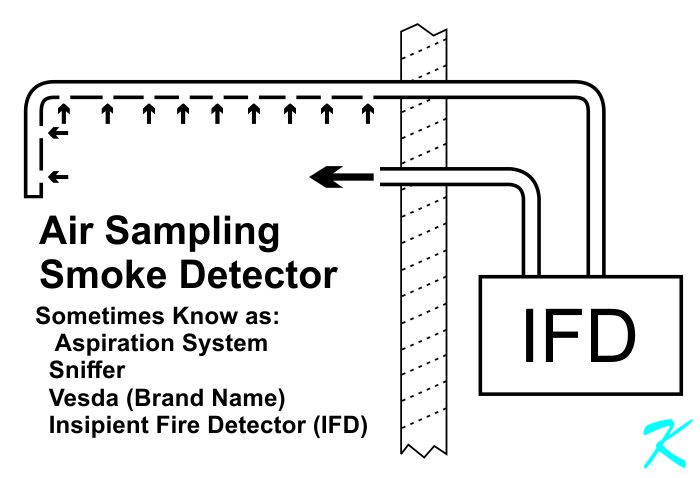Because the NFPA Code itself is designed to be used by the government in the government's set of laws, the NFPA Code is written as a set of laws. The NFPA Code, though, in order to stay current keeps changing every three years or so.
In the year 1999, for instance, in their definitions at the beginning of the codebook, the NFPA 72 Code basically says that a detector is a device suitable to be connected to a circuit that detects smoke or heat.
In the year 2007, though, the NFPA 72 Code says the same thing in their definitions, but it goes on in a sub-paragraph saying that an Air Sampling-Type Detector consists of the pipe or tubing network connected to the detector where the air is then analyzed. That means that in order to be listed as an air sampling-type smoke detector, the manufacturer's PVC pipe is listed to be used with the specific air sampling system.
According to the NFPA Code, it's an air sampling-type smoke detector system - it's not just the detector box mounted on the wall.
In other words, the manufacturer has their pipes designed specifically for their detection system. Not only that, but the design of the piping system (length of pipe, air sample holes, area covered by each sample pipe, elbows in the pipe, etc.) has to be designed using the manufacturer's own design system (usually in the form of computer software) to make sure the system, including the air sampling, will detect all fires, and do this detection in a timely basis.
I'm not sure which version of the NFPA Code you are using, but the definitions in the front of the NFPA Code will specify that the Air Sampling-Type Detector consists of a network of piping attached to the detector. In other words, in order to be a listed detection system, the piping and the piping design is part of the detector.
Further information can be found by googling "VESDA" (Very Early Smoke Detection Apparatus) and looking at:
VESDA by xtralis.
Also look at:
VESDA-E Aspirating Smoke Detection
.
Further information can also be found by googling "air sampling system" and looking at:
AspiratingSmoke Detection.
Douglas Krantz
